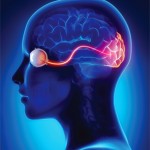“The one common theme that we saw in the ACR’s Choosing Wisely list and many other campaigns is imaging, imaging, imaging,” says Dr. King. “There are a variety of reasons for this overuse, including liability issues and patient expectations.”
It’s very clear, especially when talking about low back pain, that the use of imaging without red flags, including neurological deficits or the suspicion of other underlying processes such as infection, are not cost effective and can cause harm. The impact can be great, just because the number of patients is so large.
“Low back pain is very common. About one in every four U.S. adults will have some experience with it over a three-month period, and rheumatologists are very likely to encounter it in clinical practice,” says Dr. Yazdany. “As many as half of all patients in some settings will receive imaging even though most guidelines recommend against it.”
Nuanced Decisions
Dr. Yazdany also notes that in many cases, the rheumatologist’s decision may not be quite as easy to make. Use of biologic or nonbiologic disease-modifying medications can increase the risk of infections in patients with rheumatic disease, and an immunocompromised state can sometimes be a red flag signaling that imaging may be appropriate.
“It is more likely that a patient seen by a rheumatologist may have the exceptions or red flags,” says Dr. Yazdany. “These lists are not to take the place of a clinical assessment and careful history and physical exam. When these concerns are found, appropriate imaging still needs to do be done.”

Another suggestion from the AAFP says that dual-energy X-ray absorptiometry (DEXA) should not be used to screen osteoporosis in women younger than 65 or men younger than 70 who have no risk factors. It is not viewed as a cost-effective test in younger, low-risk patients. However, the response to this may be more nuanced in rheumatology than in other specialty areas.
“The measure used by the AAFP is also consistent with what other national groups are considering,” says Ken Saag, MD, MSc, professor of medicine and director of the Center for Education & Research on Therapeutics of Musculoskeletal Disorders (CERTS) at the University of Alabama at Birmingham. “There are plenty of exceptions, and this is where this type of measure becomes challenging to the physician. We have a large number of people on corticosteroids, and they do need to be tested younger and more often.”



